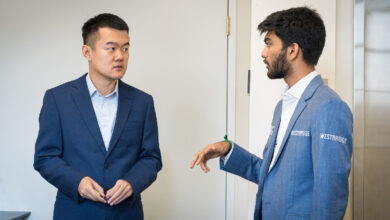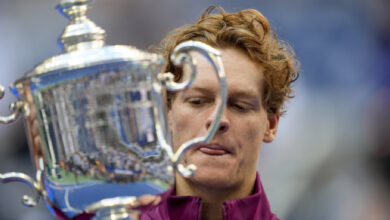How Anjum Moudgil brushed away blues after falling out of love with shooting and painting | Sport-others News

Anjum Moudgil knew the exact moment when she realised she wasn’t ‘doing well mentally’. “It was when I stopped painting.”Anjum is a former world No.1 shooter, a world championship medall and an Olympian. But she’s a lot more than a rifle-wielding 30-year-old.
She can juggle fire, used to box and perform deadlifts. The colourful strokes of brush, however, gave her a real sense of purpose. Anjum painted for herself and her teammates. During the pandemic, she even auctioned her artwork, the proceeds of which were donated to the needy.
So, when she suddenly lost interest in painting during a dip in form, it triggered alarm bells.
“I was just shooting, giving everything to shooting. I didn’t like that,” she said. Obsessing over results, she first fell out of love with the sport. And thenwas out of the Indian team.
On Friday, after spending the whole of 2023 on the sideline, Anjum returned to the national team for the Paris Olympics. She did enough to finish second after the conclusion of the selection trials in the 50m 3-position event, behind Asian Games gold medall Sift Kaur Samra.
As per the National Rifle Association of India’s selection policy, Sift and Anjum are poised to represent India in this event at the Olympics but the team will be officially announced next week after the selection committee meets.
Imposter syndrome
To most, reaching the pinnacle of their sport would be a validation of a lifetime’s effort. For Anjum, it became a source of self-doubt. The day she became the world No.1, in 2022, was when her dramatic slide began.
“I was like, it’s make that I became number one. I mean, everyone used to tell me to believe that you were good. I had issues with believing that I was good,” she said.
In the same year, she went to the World Championship and missed an Olympic quota just one point.
“When I missed a quota there, I immediately was just dying to get another chance to win a quota… That didn’t work because I had put immense pressure on myself and I was not performing well. That did affect me a lot mentally,” Anjum said.
A painting done Anjum. (Special Arrangement)
She ‘lost’ her way in the ‘chaos of winning a quota’ and gradually, as a consequence of chasing only results, began losing interest in shooting. A constant in the team, Anjum’s scores at the domestic trials plummeted so dramatically that she couldn’t even make it to the team. She missed the World Cups and the Asian Games.
It wasn’t the results, however, which resulted in a red flag. It was when she stopped painting during this period that she sensed trouble. Almost immediately, the sports psychology student sought professional help.
“I had to figure out ways to get back and start liking the sport again. So, I trained on my own, went out to train alone and then played a competition without the Indian team,” Anjum said.
It was a drastic step, for Anjum wasn’t just a quality shooter she was also the glue that kept a young Indian shooting team together. There were times when teammates, young and old would gravitate towards her.
She painted for Rahi Sarnobat and Manu Bhaker. Shared meals with Aishwary Pratap Singh Tomar, another shooter who has all but sealed his Paris Olympics quota. And worked out with young shooters Vijayveer Sidhu and Arjun Babuta.
Pre-Tokyo Olympics, she was the guiding force for the teenage army of Indian shooters. “I knew that the kids in the team were very young. Aishwary, Manu, Divyansh (Panwar), and Saurabh (Chaudhary), they were so young. And they were shooting so good before Tokyo. So somewhere I was like, if they don’t shoot well, I know they will break,” Anjum said.
Tokyo, in hindsight, could be an Olympics where Indian shooters learnt their lessons of a lifetime. It’s something that can be said with certainty only after the Paris Games but for Anjum, the time away from the team was crucial to reflect and improve.
“I just had to rediscover what I am, what I like. So I worked on my makes in my technical, in my shooting, in my position. It 100 per cent helped me,” she said.
The scores she shot during the month-long trials, four overall, indicate that Anjum is back to her best. She shot an average qualifying score of 589.9, considered good enough to make the cut for the World Championship and Olympic finals.
But Anjum doesn’t seem too obsessed with scores. She’s just happy that she has begun painting again. Her latest works are bright and colourful. “It’s a new thing, the use of bright colours,” she said, flipping through photos of her paintings. “Even my family tells me to keep painting so that I can shoot well.”
She hopes for an exhibition someday. Before that, she will have a chance to apply fresh, bright strokes on her blank, new shooting canvas.







